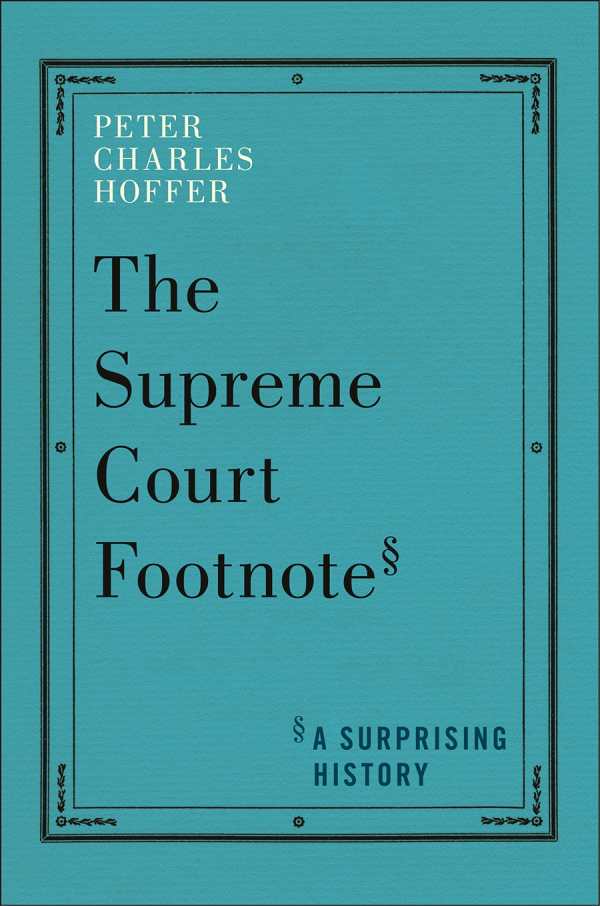The Supreme Court Footnote
A Surprising History
A startling examination of eight influential Supreme Court cases, The Supreme Court Footnote describes the increasing importance of footnotes in signaling the justices’ thinking and direction.
This astute book covers Peter Charles Hoffer’s close readings of eight historic Supreme Court cases wherein footnotes played an illustrative role, starting with Chisholm v. Georgia in 1793 and ending with the controversial Dobbs v. Jackson case in 2022. The infamous Dred Scott decision, for instance, contained six “apparently innocuous” footnotes that underscored the “irreconcilable conflict between freedom and slavery” prior to the Civil War. And the footnotes in the unanimous Brown v. Board of Education decision on school desegregation carried Chief Justice Earl Warren’s momentous assertions that “the historical record was not useful” and “[we] cannot turn back the clock to 1868.”
Hoffer imbues the seemingly arcane topic with drive and urgency. His discussion of District of Columbia v. Heller describes how justices Antonin Scalia and John Paul Stevens used footnotes to spar over the convoluted syntax of the Second Amendment. In Dobbs, Justice Samuel Alito used 117 footnotes to ground his decision in the precedent of history, noting that the reproductive right to abortion did not exist in 1868 when the Fourteenth Amendment was ratified. In contrast, dissenting justice Elena Kagan’s thirty-one footnotes attempted to unite precedent with fifty years of history and tradition since Roe v. Wade, emphasizing that “history is ongoing.” She and Justice Alito seemed to occupy “different constitutional planets,” Hoffer writes, adding that Kagan demonstrated “how central [the footnote] had become to judicial writing.” Further, the book includes incisive profiles of key justices and insights into the process and politics behind court decisions.
In a time when many see the Supreme Court as politicized and divisive, The Supreme Court Footnote interprets the intricacies of the court’s decisions with intelligence and vision.
Reviewed by
Kristen Rabe
Disclosure: This article is not an endorsement, but a review. The publisher of this book provided free copies of the book to have their book reviewed by a professional reviewer. No fee was paid by the publisher for this review. Foreword Reviews only recommends books that we love. Foreword Magazine, Inc. is disclosing this in accordance with the Federal Trade Commission’s 16 CFR, Part 255.

